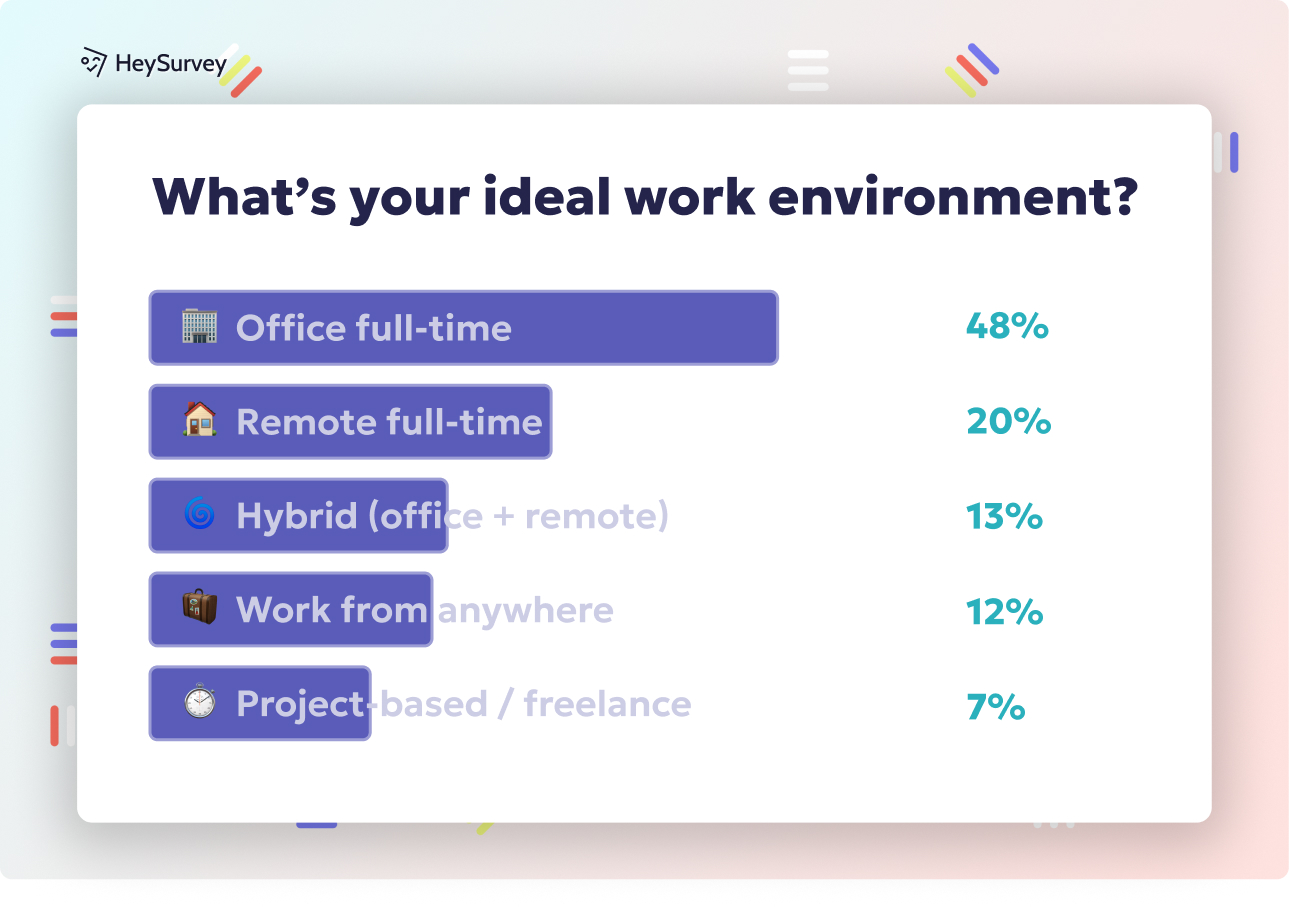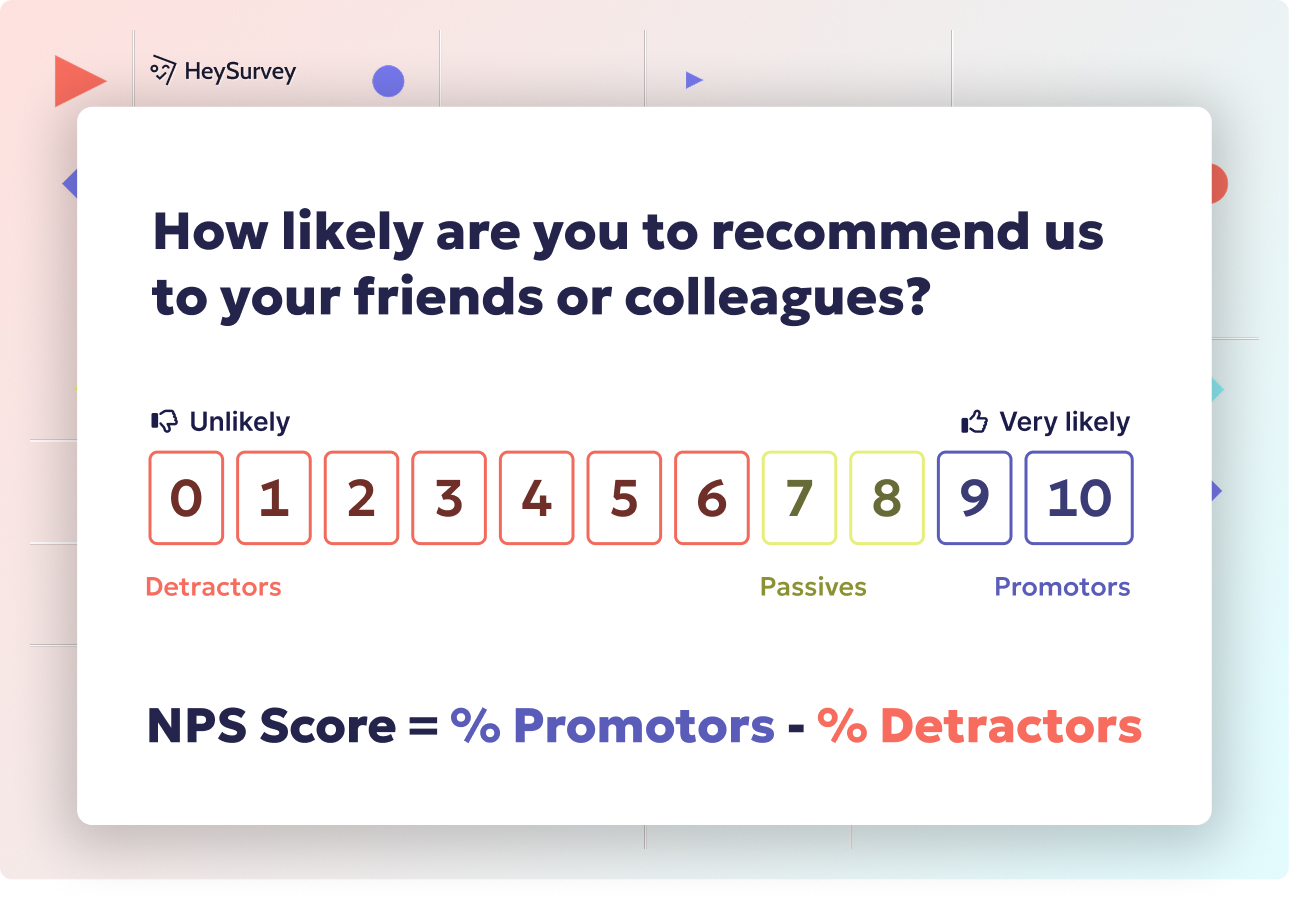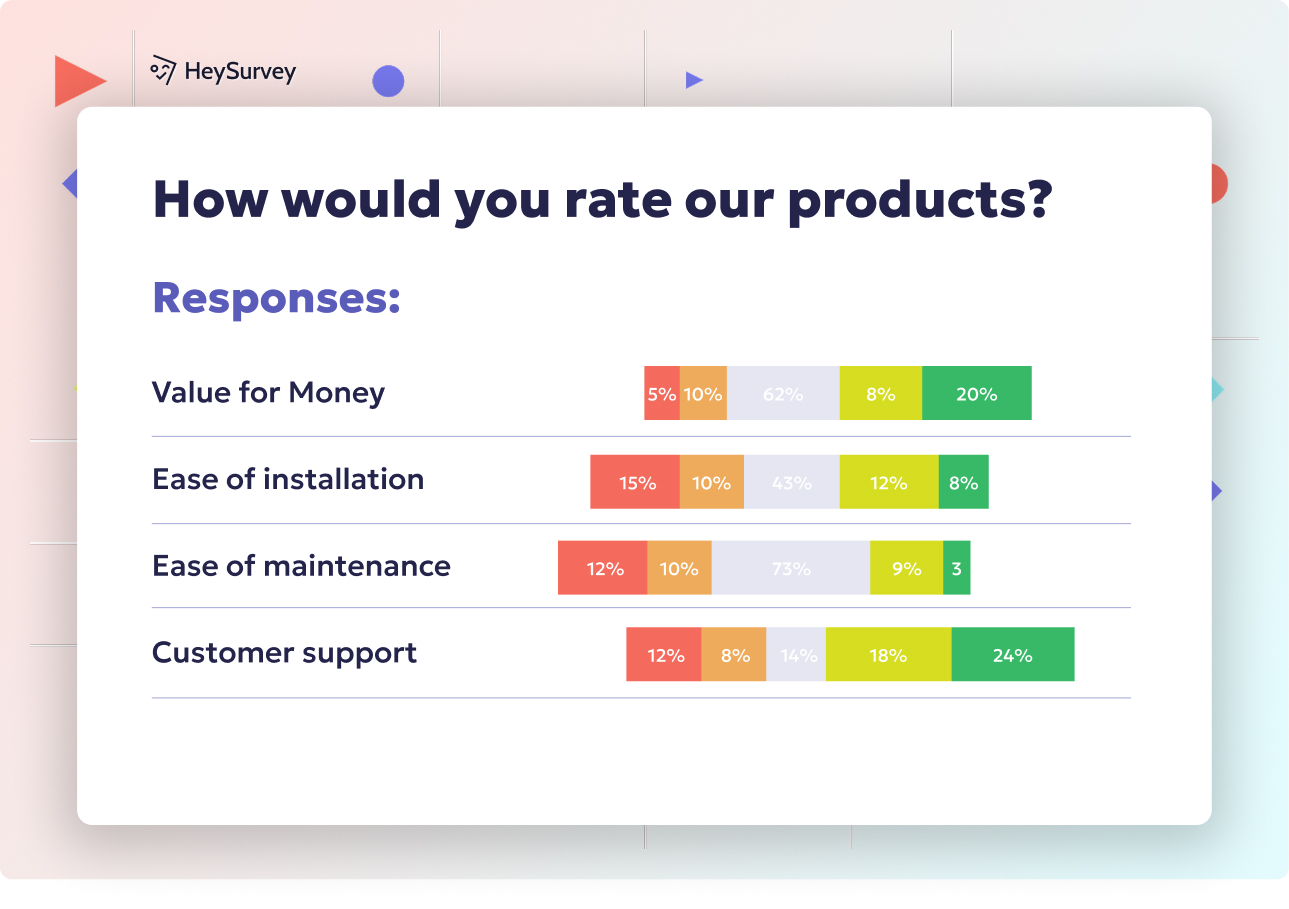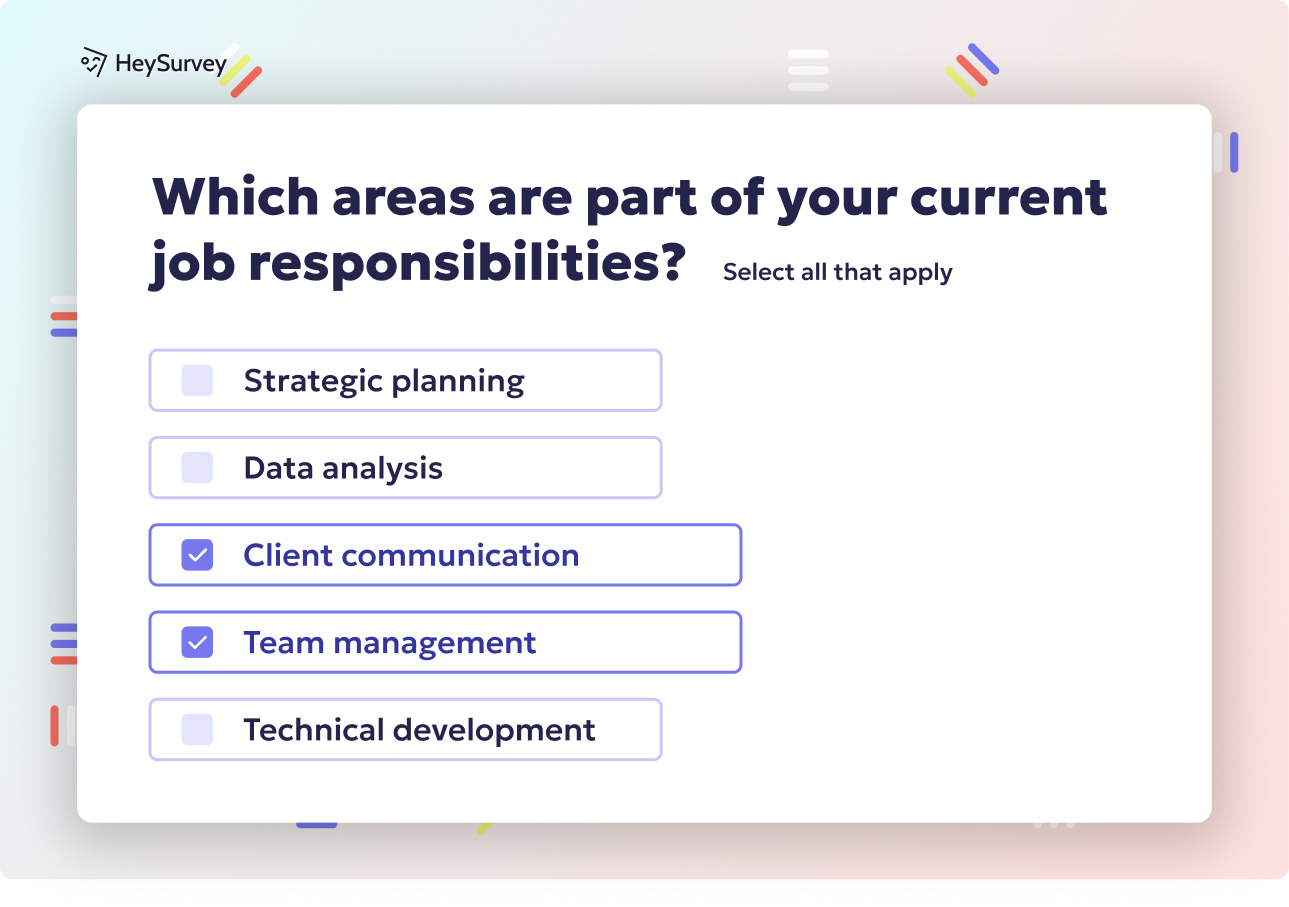32 Coaching Survey Questions: Types, Uses & Examples
Explore 25+ coaching survey questions across key types to boost coaching impact, measure success, and refine your coaching strategy.
Coaching survey questions aren’t just paperwork in disguise—they’re secret weapons for coaches and clients alike. These clever question sets measure coaching quality, capture client satisfaction, and reveal that elusive return on investment (ROI). With the right questions, coaches can tweak their approach, prove their worth to the boss, and even expand their coaching empire. Deploying surveys isn’t a one-and-done affair—they matter before the first session, during the journey, and after the “aha” moment. Want to see how? Let’s dive in!
Pre-Coaching Needs-Assessment Survey
Why & When to Use This Survey
The pre-coaching needs-assessment survey is like a compass—helping everyone find their direction before the coaching adventure begins. By asking pointed questions before the first session, coaches can uncover goals, expectations, and skill gaps. Think of it as shining a flashlight into the corners of the coachee's intentions.
This survey isn’t just about curiosity—it’s practical. It sets baseline metrics that become the measuring stick later. Plus, it tells coaches who they’re working with, what’s possible, and how to personalize every session for results (and smiles). Deploy this survey before kickoff meetings, right after the engagement contract is signed.
Setting expectations early is essential for a smooth ride. Here’s why you should use this survey before coaching actually starts:
- It helps clarify exact goals for both the coach and client.
- It teases out hidden challenges and barriers that aren’t always obvious.
- It offers the coachee a voice, making them feel invested from the start.
- It prevents those “why are we here?” moments halfway through.
- It sets a foundation for measuring true progress at the end.
For busy professionals (and even busier coaches), taking time for a pre-coaching survey is like sharpening an axe before chopping—the work goes faster and better.
5 Sample Questions to Include
Want your needs-assessment survey to work magic? Start with these high-impact questions:
Which three professional skills do you most want to improve over the next six months?
On a scale of 1–10, how confident are you in your current leadership abilities?
What obstacles have previously prevented you from reaching these goals?
How do you prefer to receive feedback (written, verbal, real-time, scheduled)?
What would “success” look like at the end of our coaching engagement?
These questions guide the conversation toward actionable insights and set up both coach and client for a tailored, purposeful experience. Never underestimate the power of getting it right from the start!
Implementing pre-coaching needs-assessment surveys can lead to a significant increase in assessment pass rates, with studies showing improvements of up to 9.5 percentage points. (er.educause.edu)

Creating a coaching survey with HeySurvey is a breeze—even if you’ve never used it before. Follow these 3 simple steps to get your survey up and running in no time!
Step 1: Create a New Survey
- Log into your HeySurvey account (or start without an account if you just want to experiment).
- Click on “Create Survey” from the dashboard.
- Choose either an Empty Sheet to start from scratch or select a Pre-built Template that matches your coaching survey type.
- Name your survey internally so you can easily find it later.
Pro tip: If you’re reading this on the HeySurvey site, you might see a button below to open a ready-made template. That’s a fantastic shortcut to get you started instantly!
Step 2: Add Questions
- In the Survey Editor, hit the “Add Question” button—either at the top or where you want the new question to appear.
- Pick the question type that fits best: Text for open answers, Choice for multiple options, or Scale for rating questions.
- Enter your question text and add any helpful descriptions or instructions.
- Mark questions as required if you want to make sure no answers get skipped.
- Use branching if needed to send respondents down different paths based on their answers.
Remember to mix question types for a rich, engaging survey that balances ratings with thoughtful responses.
Step 3: Publish Your Survey
- When your questions are set, click on “Preview” to see the survey as your participants will.
- Use the Designer Sidebar if you want to tweak colors, fonts, or layouts for that professional coaching vibe.
- Hit the “Publish” button once you’re happy. You’ll get a shareable link that you can send out or embed in your website.
- Note: Publishing requires an account so you can see all incoming responses and reports.
Bonus Step 1: Apply Branding
- Add your logo and customize colors in the Designer Sidebar to align the survey with your coaching brand.
- Branded surveys build trust and encourage higher response rates.
Bonus Step 2: Define Settings
- Use the Settings Panel to set your survey availability (start/end dates), response limits, and even a custom redirect URL after completion.
- Enable or disable options like allowing respondents to view aggregate results—great for transparency!
Bonus Step 3: Skip Into Branches
- Add branching logic to tailor the respondent’s journey depending on their answers.
- For example, skip questions that don’t apply or dive deeper where more input is needed.
- Branching creates a personal, focused experience that boosts engagement and quality of feedback.
And voilà! You’re ready to collect insightful coaching feedback with HeySurvey—simple, stylish, and smart. Now hit that button below to open a perfect survey template and start customizing!
Mid-Coaching Pulse Survey
Why & When to Use This Survey
Surveys midway through coaching are the equivalent of a mid-journey check-in—think pit stop rather than final destination. Conducting a pulse survey halfway enables coaches and coachees to take stock and get unstuck if things stall. Has momentum dropped off? Is engagement slipping? A well-timed pulse survey can reveal all that and help steer the program back on track.
Use this survey precisely when the original motivation starts to fade—typically halfway through the coaching engagement. It provides the chance for honest, real-time feedback and lets coaches adjust tactics, session frequency, or materials before things head off course.
Don’t wait for the final report card. By asking smart questions mid-journey, coaches can:
- Spot disengagement before it turns into ghosting.
- Uncover session cadence or structure issues early, when they’re fixable.
- Encourage honest dialogue about what’s working and what isn’t.
- Fine-tune the coaching plan based on what’s most helpful for the client.
- Save time and reputations with quick course corrections.
A pulse survey is a powerful lever for momentum and accountability. And who doesn’t love a quick check to keep things humming?
5 Sample Questions to Include
Add these to your mid-coaching pulse survey for crystal-clear insights:
How satisfied are you with the progress toward your stated goals so far?
Which coaching tools or exercises have been most valuable to you?
What challenges are you currently facing that we haven’t addressed?
Rate the effectiveness of our session frequency and length.
What would make the remainder of the program more impactful for you?
This list helps keep feedback concrete and actionable, ensuring the second half of coaching is as meaningful (or even more so) than the first.
Implementing mid-coaching pulse surveys can significantly enhance coaching effectiveness by providing real-time feedback, allowing for timely adjustments, and fostering a culture of transparency and continuous improvement. (gallup.com)
Post-Coaching Impact Survey
Why & When to Use This Survey
It’s celebration time! But before you pop the confetti, a post-coaching survey helps capture the real impact your coaching delivered. Immediately after the program wraps, send a survey to measure behavior change, goal attainment, and ROI. This isn’t just bragging rights—it’s crucial data for clients and coaches alike.
The post-coaching survey is your client’s chance for reflection and a coach’s ticket to continuous improvement. Insights are especially valuable for program updates, marketing, and organizational reporting. Gather stories, testimonials, and quantifiable results right when the experience is fresh, not three months down the road when memories have faded.
Here’s why post-coaching surveys are so powerful:
- They measure progress toward initial objectives.
- They capture new habits and skills your client has adopted.
- They track the coaching impact on tangible business or personal metrics.
- They provide ready-made quotes for marketing your services (with permission, of course).
- They lay the foundation for ongoing support or follow-up sessions.
Deploy this survey within a week of final coaching sessions—while the transformation (and emotions) are bright and vivid in your client’s mind.
5 Sample Questions to Include
These questions can unlock rich insights and client testimonials:
To what extent did the coaching help you achieve your initial objectives?
Which new behaviors have you consistently applied since coaching began?
How has coaching impacted your performance metrics (e.g., sales, productivity)?
Would you recommend this coaching program to a colleague? Why or why not?
What is the single greatest takeaway you gained from the experience?
Use these to prove your coaching value—and to keep improving session after session.
Coaching Relationship & Coach Evaluation Survey
Why & When to Use This Survey
The coaching relationship is everything! Without a great connection, even the most brilliant techniques fall flat. The relationship and evaluation survey explores coach rapport, communication style, and professionalism. It’s like a coaching “review” that ensures quality and spotlights coach strengths and growth areas.
It’s best to deploy this survey during or after a coaching engagement, once enough trust and experience have built up. This isn’t just about celebrating wins; it’s about nurturing constructive feedback and cultivating stellar coaching standards across the board.
Here’s why the relationship survey is a must-have:
- It uncovers hidden strengths and development opportunities for the coach.
- It confirms if the coach’s style matches the coachee’s learning preferences.
- It highlights whether the space feels supportive and inclusive.
- It helps coaches refine their delivery for current and future clients.
- It’s essential for benchmarking coaching quality in organizations with multiple coaches.
Include this survey as part of any robust coaching wrap-up—or after a key milestone in an extended engagement.
5 Sample Questions to Include
Try these questions for honest, actionable coach feedback:
How well did your coach listen and understand your challenges?
Rate the coach’s ability to hold you accountable without judgment.
Did the coach provide actionable feedback you could implement immediately?
How culturally competent and inclusive did you find the coaching approach?
What could the coach do differently to improve future sessions?
By focusing on both strengths and areas for growth, you’re ensuring sustained excellence in every coaching relationship.
The Coach-Athlete Relationship Maintenance Questionnaire (CARM-Q) effectively assesses conflict management, motivational strategies, and support within coach-athlete relationships. (frontiersin.org)
360-Degree Coaching Effectiveness Survey
Why & When to Use This Survey
Sometimes, a coachee’s growth shines brightest in the eyes of others. Enter the 360-degree coaching effectiveness survey—a feedback powerhouse that pulls in opinions from managers, peers, and direct reports. This survey validates observable behavior change, making it a favorite for leadership and executive coaching programs.
Don’t keep the feedback circle too tight; invite those who interact daily with the coachee and can truly see their evolution. Deploy this survey toward the end of a program, or alongside post-coaching review, especially where leadership transformation or stakeholder buy-in is vital.
Here’s why organizations love 360-degree surveys:
- They give a well-rounded view of a coachee’s behavioral improvements.
- They pinpoint gaps between self-perception and external feedback.
- They highlight whether coaching results are rippling out to benefit wider teams.
- They help design ongoing development plans that stick.
- They offer measurable outcomes when reporting to higher-ups.
This type of survey is especially useful for charting the ROI of leadership development programs.
5 Sample Questions to Include
For a brilliant 360-degree survey, ask:
Have you observed noticeable improvements in the coachee’s leadership style?
How effectively does the coachee now handle conflict situations?
Describe one positive behavior change you’ve seen since coaching began.
On a scale of 1–10, how well does the coachee solicit and act on feedback?
What additional support could enhance the coachee’s continued growth?
These questions are excellent at surfacing multi-rater feedback that matters most to organizational success.
Coaching Program Satisfaction Survey (Organizational Level)
Why & When to Use This Survey
Coaching isn’t just about individuals. When dozens (or hundreds) of employees join a program, organizational leaders need to know: Is it working at scale? The coaching program satisfaction survey zooms out to assess logistics, usability, and scalability across the wider team.
Administer this survey after a coaching cycle or when rolling out a new platform. It captures the whole operation in one snapshot—including the scheduling system, resource availability, and program alignment with company goals.
Here’s why this survey is every HR leader’s friend:
- It shines a light on friction points like clunky tech or hard-to-book sessions.
- It ensures content actually supports broad organizational objectives.
- It measures user-friendliness, accessibility, and communication quality.
- It builds a business case for investment in coaching at scale (or tweaks as needed).
- It gathers direct ideas on how to improve the experience for future participants.
This survey is critical whenever you want to prove coaching’s ROI to leadership—or uncover opportunities for organization-wide upgrades.
5 Sample Questions to Include
On your organization-level survey, don’t miss these:
How easy was it to enroll and schedule coaching sessions?
Rate the relevance of program content to organizational objectives.
Were resources (worksheets, recordings, portals) accessible and user-friendly?
How satisfied are you with the communication from the coaching program administrators?
What improvements would make the program more valuable to future participants?
This approach ensures scalability and relevance—not just for today’s cohort, but for every future wave of talent.
Best Practices: Dos and Don’ts for Crafting Coaching Survey Questions
Survey crafting is part art, part science, and a dash of intuition. Nailing the basics makes sure your questions spark actionable feedback instead of sighs (or snoozes). Let’s break down what makes a survey not just good—but absolutely fantastic.
Do:
- Align every question with a clear objective or KPI.
- Mix quantitative scales (like 1–10) with open-ended items for rich storytelling.
- Keep surveys concise to reduce fatigue and boost completion rates.
- Schedule surveys strategically (pre, mid, post) to map progress over time.
Don’t:
- Lead respondents with biased or double-barreled questions (“How awesome was the coach and their worksheets?”).
- Overlook anonymity and data privacy; trust is crucial for honest feedback.
- Ignore follow-up; share results and clear action steps with your clients to demonstrate you listen—and care.
Balancing closed and open-ended questions gives you a blend of stats and stories. Keep the language simple and the length manageable for higher participation rates (and less eye-rolling).
Pay special attention to formatting for easy reading—bullets, scales, and white space are your survey’s friends. If you get sleepy reading your own questions, it’s time for a rewrite!
Conclusion: Turning Survey Insights into Coaching Excellence
Every survey in your toolkit delivers more than numbers—it feeds a continuous improvement cycle that lifts coaching to new heights. Mix and match these types for deep insights that start conversations, foster trust, and prove your coaching value. Pilot, iterate, and automate to create surveys that scale with you. If you want a head start, download a free coaching survey template or reach out for a bespoke solution. Let those insights power your next big win!
Related Training Survey Surveys

31 Professional Development Evaluation Survey Questions Guide
Discover 40+ professional development evaluations survey questions with 8 types of surveys to boo...

25 Knowledge Survey Questions Examples for Effective Testing
Explore 25+ knowledge survey questions examples across 7 types, with tips on crafting high-impact...

25 Pre-Course Survey Questions to Gather Learner Insights
Discover 25+ pre course survey questions designed to gather actionable learner insights, boost en...

